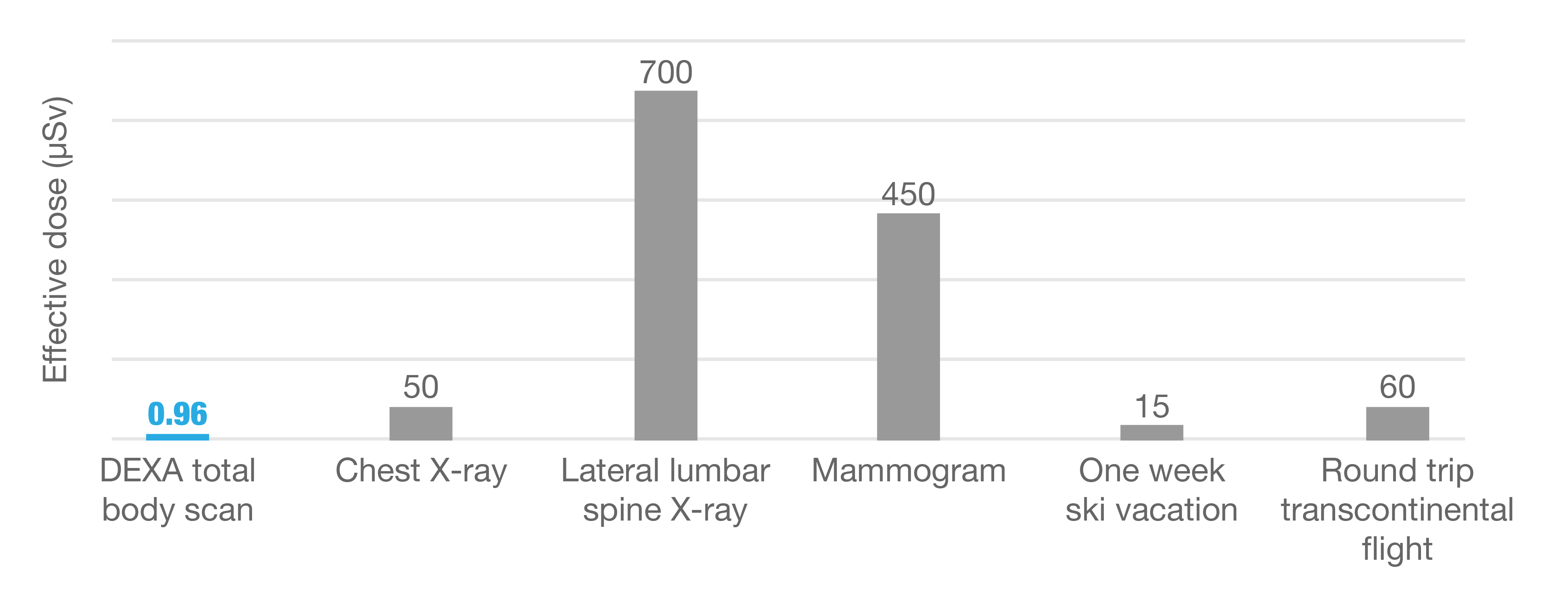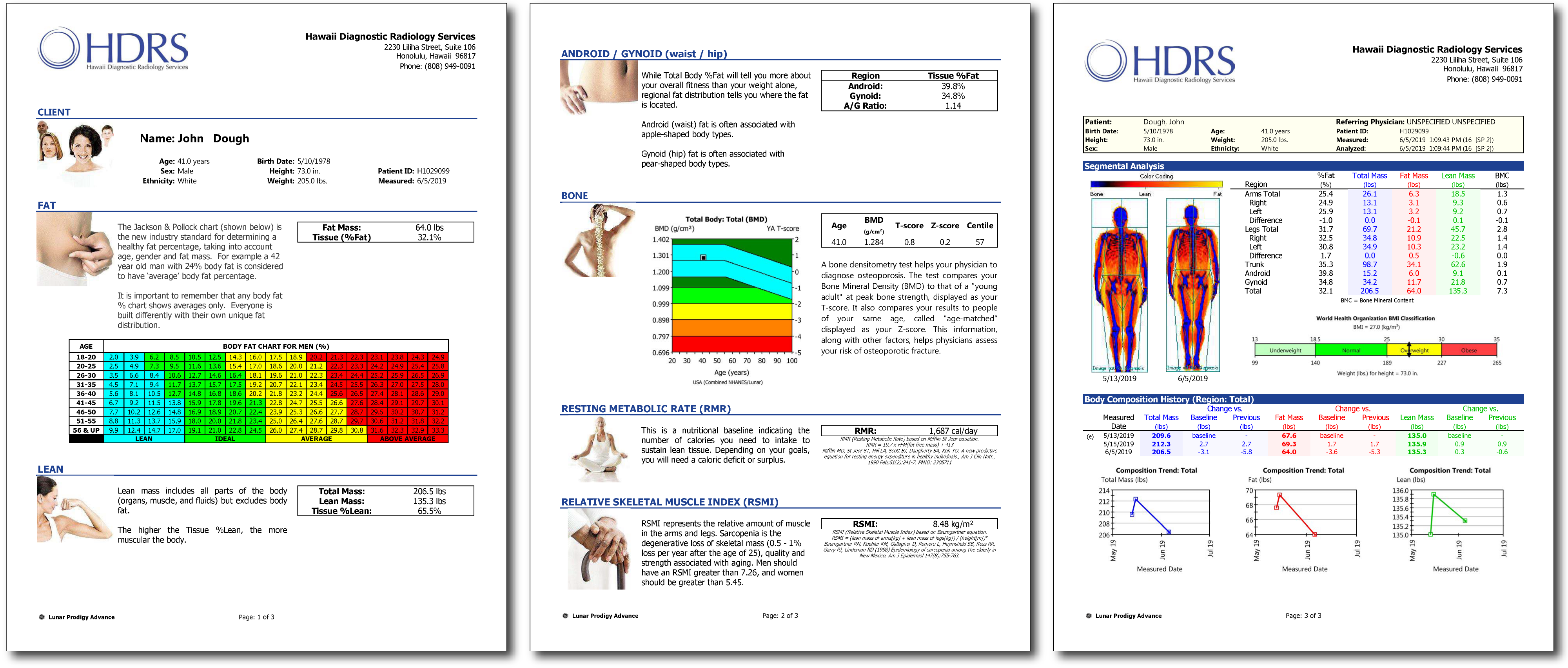Body Composition Test
Total body scans with DEXA provide accurate and precise measurements of total body and regional bone mineral density and body composition, including bone mineral content, lean tissue mass, fat tissue mass, and percentage fat.
Why body composition?
Most people are used to stepping on a scale at every visit to a doctor’s office, but monitoring weight alone, while helpful, is at best a crude and an imprecise way to assess their health. Today’s body composition measurement tools provide far more complete and precise information.
Body composition measurements with dual-energy X-ray absorptiometry (DEXA) can, with accuracy and precision, look beyond weight and traditional body mass index (BMI) to determine and monitor distribution of body fat, bone, and lean muscle mass. Body composition DEXA exams can provide useful regional and total body information to healthcare professionals in their management of conditions where the condition itself, or its treatment, can affect the relative amounts of fat and lean tissue.
How does body composition work?
The DEXA bone densitometer uses small amounts of X-ray to produce the total body image. The X-ray is composed of two energy levels that are absorbed differently by bone, lean and fat tissues. These differences in absorption are used to determine bone mineral density (BMD) and body composition values. A computer software application assists in determining the amount of bone, lean and fat tissues across the whole body and in specific regions.
X-ray dose comparison
The X-ray dose from a typical body composition exam is comparable to a round-trip transcontinental flight.

During the test
The DEXA bone densitometer examination table is padded and comfortable.
- Your name, age, height, weight and ethnicity are entered into the computer before your exam. This information is used to compare your results to a normal reference group.
- You are then asked to lie on your back and remain in your normal clothing, in most cases. Belt buckles, metal or thick plastic buttons and metal jewelry need to be removed from the region being examined.
- The operator positions your arms and legs.
- During the exam, which is painless and typically takes less than 10 minutes, you lie still and breath normally.
Your body composition results
Your total body composition is calculated for various regions (arms, legs, trunk, total). Results are displayed for percent body fat, fat mass, and lean muscle mass. Your bone mineral density (BMD) may also be calculated, providing additional information about your bone health. Over time, these results can be monitored to better understand how changes in diet, lifestyle, exercise, or other interventions are influencing your body composition.

